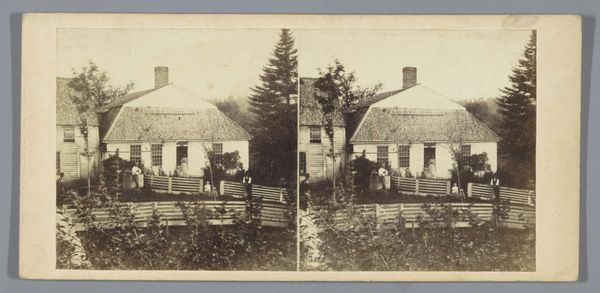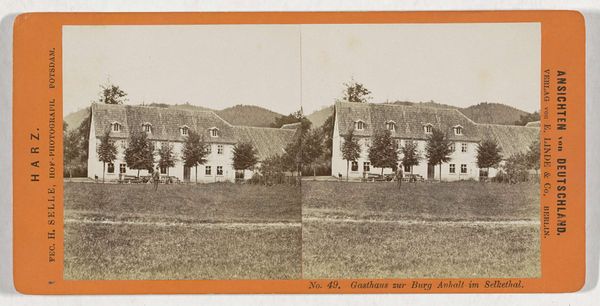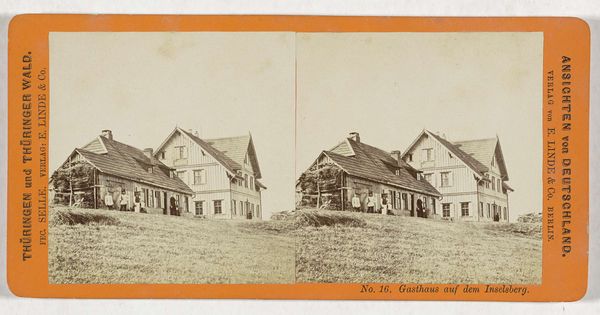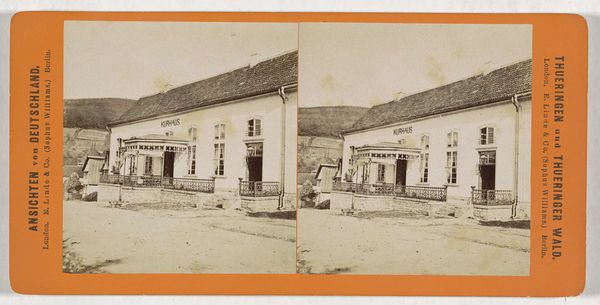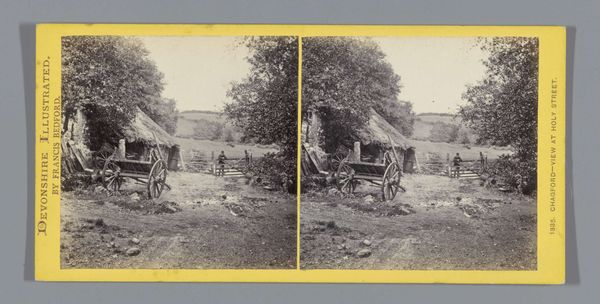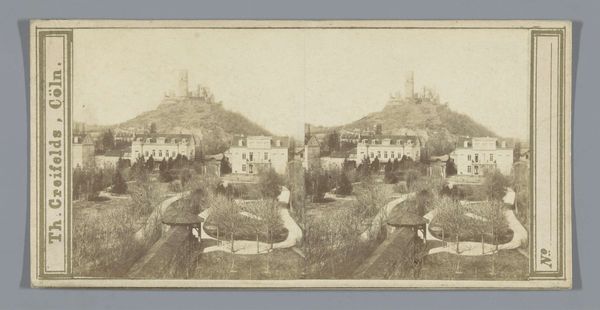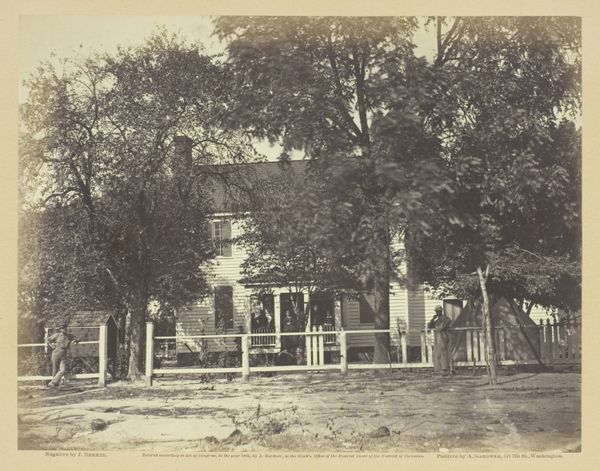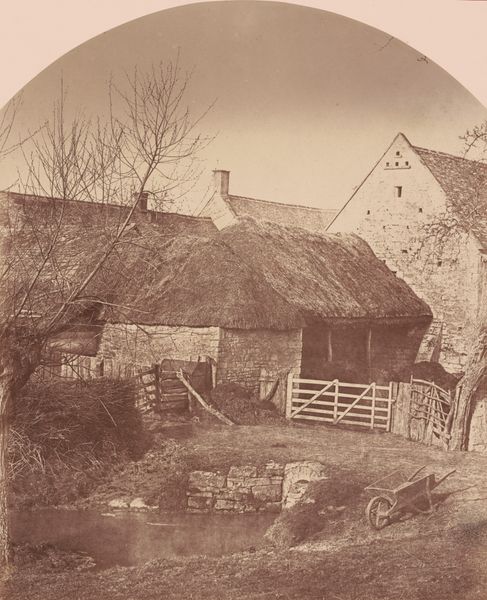
Dimensions: height 87 mm, width 177 mm
Copyright: Rijks Museum: Open Domain
Curator: This albumen print, attributed to Baldi & Würthle, made sometime between 1862 and 1880, is titled "People sitting in front of a guesthouse on the Schmittenhöhe, Austria." The stereo card format offers a doubled, slightly offset image, providing an illusion of depth. Editor: It gives such a quiet, almost mournful feel. The tones are muted, and the people sitting there look rather isolated, despite being gathered. Is it simply the effect of early photography, or is there more at play here? Curator: Well, placing this image within its historical context helps. The Schmittenhöhe was developing as a tourist destination around this time. The arrival of railway transport and the growing popularity of mountain tourism would influence the very framing of Alpine culture. What's included, and excluded from view become telling choices. Editor: It seems like such an ordinary moment, people taking respite on a mountain, yet that ordinariness might be what’s revealing. Are these primarily working-class tourists gaining access to landscapes previously enjoyed by only a wealthy few? How are notions of leisure being redefined in this moment? Curator: Exactly! Consider the emergence of the genre-painting theme at this moment too. It underscores a broader interest in capturing scenes from everyday life, increasingly experienced through a class lens as various echelons of society access the space. How might new power structures of leisure then influence aesthetic representation and the development of landscape art? Editor: And who has access to even this image of a landscape? The rise of photographic prints democratizes representation but not quite enough to subvert entrenched class lines. Even through that supposed democratization, we can trace emerging dynamics between labor, access, and capital. Curator: That said, romanticism clearly shapes the photographic image, so you get this collision of emerging genre interests along with heightened artistic rendering, with technology playing the fulcrum between all three. The history is in the nuance! Editor: I'm still drawn to the figures— their lack of interaction speaks volumes about social relationships perhaps fractured by new money and new forms of tourism. Food for thought indeed.
Comments
No comments
Be the first to comment and join the conversation on the ultimate creative platform.


